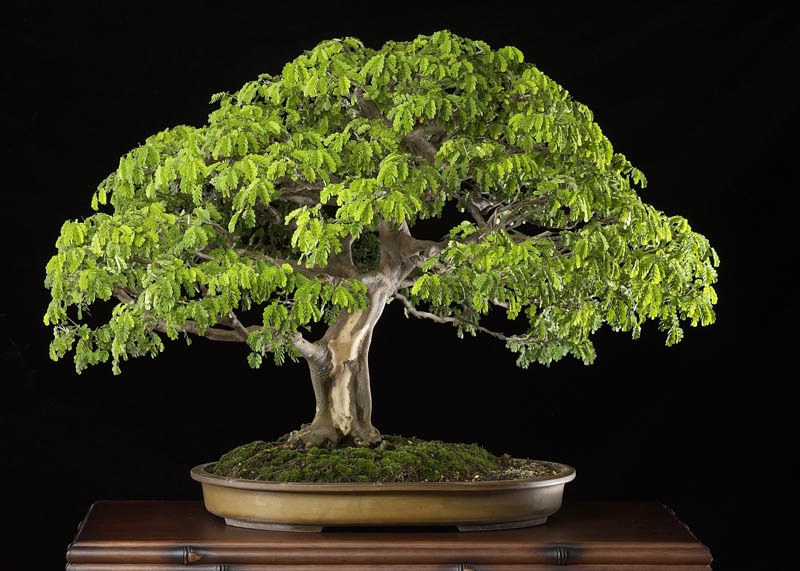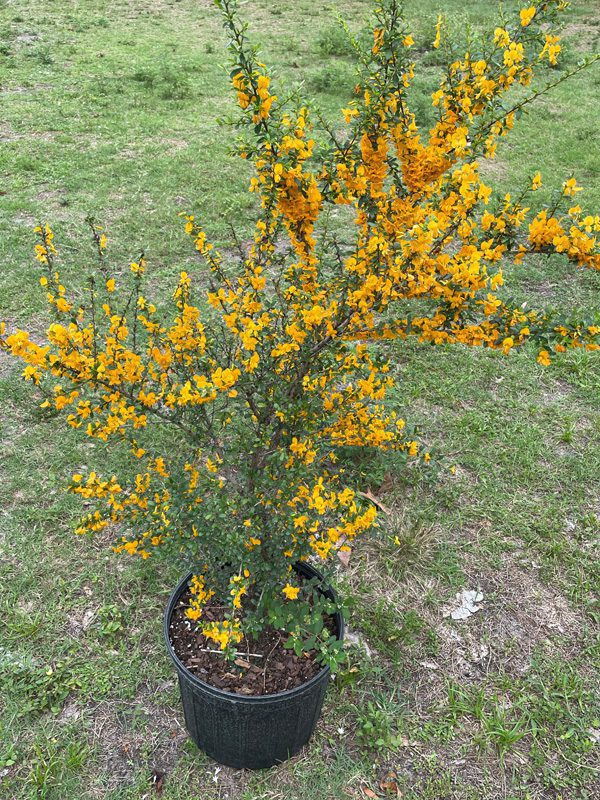The Jamaican Rain Tree bonsai requires regular pruning and proper watering. It thrives in bright, indirect sunlight.
The Jamaican Rain Tree, also known as Pithecellobium, is a popular choice for bonsai enthusiasts. This tropical tree is well-loved for its delicate, feathery foliage and striking appearance. Ensuring it receives adequate light and maintaining the right watering schedule are key to its health.
Regular pruning helps maintain its shape and encourages new growth. Proper care can make it a stunning focal point in any bonsai collection. Remember to check for pests and diseases to keep it thriving. With the right care, your Jamaican Rain Tree bonsai will flourish beautifully.
Introduction To Jamaican Rain Tree Bonsai
The Jamaican Rain Tree originates from the Caribbean islands. It thrives in tropical climates. This tree is famous for its small, delicate leaves. The tree’s bark has a unique, rough texture. It has been used in bonsai for centuries. Bonsai artists love its resilience and beauty.
This bonsai tree has several unique features. Its leaves fold at night. They also close during rain. The tree produces tiny, fragrant flowers. These flowers are usually white or pink. The tree’s roots are strong and thick. This makes it ideal for bonsai training.
Ideal Growing Conditions
The Jamaican Rain Tree Bonsai needs bright light. Place it near a window with plenty of sun. Direct sunlight is great, but some shade is also fine. Make sure it gets at least 4 hours of sunlight daily. This helps the tree grow strong and healthy.
This bonsai prefers warm temperatures. Keep it in a room between 65°F and 75°F. Avoid cold drafts and sudden temperature changes. High humidity is also important. Mist the leaves with water every day. Use a humidity tray to keep the air moist. This makes the tree feel like it’s in a tropical forest.
Soil And Repotting
Proper soil and repotting are vital for the health of your Jamaican Rain Tree Bonsai. Use well-draining soil and repot every two years to ensure optimal growth.
Best Soil Mix
Use a well-draining soil mix for Jamaican Rain Tree Bonsai. A good mix includes akadama, pumice, and lava rock. This mix ensures the roots get enough air and water. The soil should retain moisture but not stay wet for long. Too much moisture can cause root rot. A slightly acidic to neutral pH is best. Check the soil mix often. Adjust if needed to keep the bonsai healthy.
Repotting Techniques
Repotting should be done every 2 to 3 years. The best time to repot is in spring. Carefully remove the bonsai from its pot. Trim about one-third of the roots. Use a sharp, clean tool to avoid damage. Place the bonsai in a new pot with fresh soil. Water well after repotting. Keep the bonsai in a shaded area for a few weeks. This helps the tree recover from repotting stress.

Credit: www.bonsaiboy.com
Watering Guidelines
Ensure the Jamaican Rain Tree Bonsai receives consistent moisture. Water thoroughly when the soil surface feels dry. Avoid waterlogging to prevent root rot.
Watering Frequency
Water the Jamaican Rain Tree bonsai regularly. Use enough water to keep the soil moist. Avoid letting the soil dry out completely. Check the soil daily during hot weather. Reduce watering during winter months. Ensure proper drainage to prevent waterlogging. Use a moisture meter for accuracy. Mist the leaves occasionally to increase humidity. Adjust watering based on the season and climate.
Signs Of Overwatering
Overwatering can harm the bonsai tree. Look for yellowing leaves as a sign. Soft or mushy roots indicate too much water. Fungal growth on the soil is another sign. Leaves may start dropping off. The tree might look weak and unhealthy. Ensure the soil has proper drainage. Reduce watering if these signs appear.
Pruning And Shaping
Prune your Jamaican Rain Tree bonsai in early spring. This time is best because the tree is still dormant. You can also prune in late summer. Always avoid pruning during the winter months. This can harm the tree. Look for new shoots and trim them back. Leave a few leaves on each branch. This helps the tree stay healthy.
Use sharp pruning shears to make clean cuts. Dull tools can damage the tree. Always disinfect your tools before use. This prevents the spread of disease. Cut branches at a 45-degree angle. This helps water run off. Always remove dead or diseased branches first. Then focus on shaping the tree. Bend branches with wire if needed. Keep the wire loose to avoid damage.

Credit: www.bonsaiempire.com
Fertilizing Your Bonsai
Choose fertilizers rich in nitrogen, phosphorus, and potassium. Organic fertilizers work best for bonsai trees. Liquid fertilizers are easy to apply and quick to act. Slow-release fertilizers provide nutrients over a longer period. Fish emulsion and seaweed extract are great organic choices.
Fertilize your bonsai tree once a month during the growing season. Reduce fertilizing during the winter months. Apply fertilizers in the early morning or late evening. Always water the tree before fertilizing. Follow the instructions on the fertilizer package for best results.
Pest And Disease Management
Aphids can be a big problem for your bonsai. These tiny bugs suck sap from the leaves. Spider mites are another pest to watch for. They make webs on your tree. Mealybugs can also cause damage. They look like small white cotton balls. Scale insects are small, flat, and oval. They stick to the branches and leaves. Caterpillars may chew on the leaves and branches. Always keep an eye out for these pests.
Fungal infections can harm your tree. Always keep the leaves dry to avoid this. Root rot is another common problem. Avoid overwatering to keep roots healthy. Leaf spots can also appear. Remove infected leaves to stop the spread. Powdery mildew looks like white powder on leaves. Ensure good air circulation to prevent this. Keep your tools clean to stop diseases from spreading. Always check your tree for signs of disease.
Seasonal Care Tips
Ensure your Jamaican Rain Tree Bonsai thrives by adjusting watering and sunlight exposure according to the season. Prune regularly and provide adequate drainage to prevent root rot.
Winter Care
Keep the Jamaican Rain Tree Bonsai indoors during winter. The tree needs bright light but not direct sunlight. Water the tree less frequently. The soil should be slightly dry between waterings. Protect the tree from cold drafts and frost. Use a humidity tray to maintain moisture levels. Prune any dead or yellow leaves.
Summer Care
Place the Jamaican Rain Tree Bonsai outside during summer. The tree enjoys full sunlight but needs some shade in the afternoon. Water the tree more often. The soil should be kept moist but not soggy. Mist the leaves regularly to increase humidity. Fertilize the tree every two weeks. Watch for pests like aphids and mites.
Advanced Techniques
Wiring helps shape the bonsai tree. Use aluminum or copper wire. Start with thicker branches. Wrap the wire spirally around the branch. Bend the branch slowly. Do not break it. Check the wire often. Remove it if it cuts into the bark.
Grafting joins two plants together. Cut a small branch from the donor plant. Make a cut on the host plant. Fit the branch into the cut. Tape it securely. Propagation grows new plants. Take a cutting from the parent plant. Dip it in rooting hormone. Plant it in moist soil. Keep it in indirect sunlight.

Credit: gardinonursery.com
Conclusion
Caring for a Jamaican Rain Tree bonsai is rewarding. Remember to water consistently and provide ample sunlight. Regular pruning helps maintain its shape. Use well-draining soil to prevent root rot. With proper care, your bonsai will flourish beautifully. Start your bonsai journey today and enjoy the serenity it brings.
